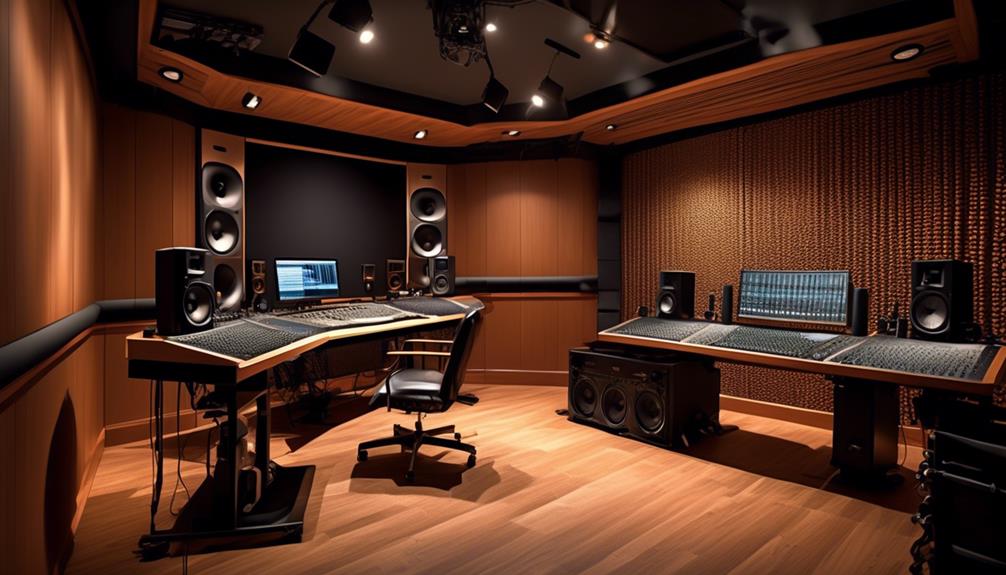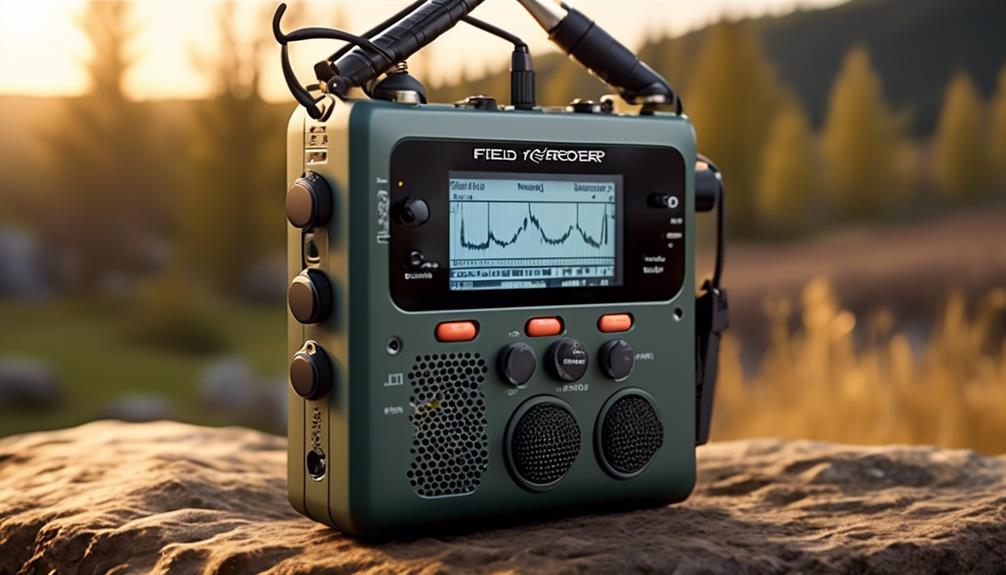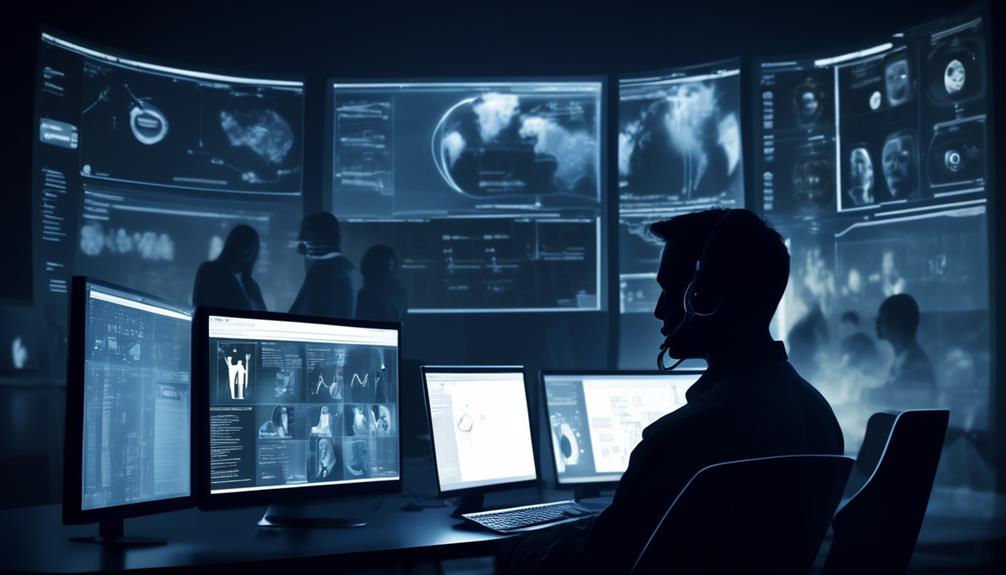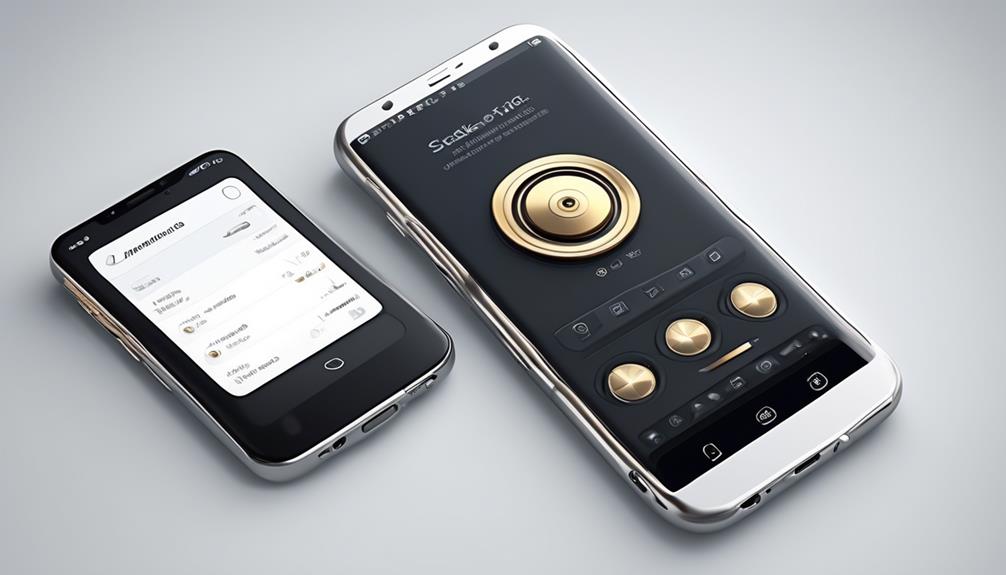We’ve all heard recordings that sound like the sound is just kind of… there.
But have you ever stopped to think about the benefits of recording in stereo? Well, let me tell you, there are some fascinating reasons why many audio professionals and enthusiasts prefer to work in stereo.
The depth and spatial imaging are just the beginning. But I'll get to that in a minute.
Key Takeaways
- Precise placement of sound sources within the stereo field
- Capturing interaural time differences for realistic sound perception
- Enhanced spatial imaging and 3-dimensional sonic landscape
- Versatility in music production with independent processing and stereo effects
Enhanced Depth and Spatial Imaging
Enhancing depth perception and creating a more immersive listening experience, stereo recording allows for precise placement of sound sources within the stereo field, providing a sense of spatial imaging and directionality. This technique captures interaural time differences, enabling us to perceive sound in the same way we do in real life.
When played back through two speakers, the recorded sounds create a stereo image, simulating the natural acoustics of a live performance. By leveraging various recording techniques, such as microphone placement and stereo miking, we can enhance the spatial imaging and depth of the audio. Stereo speaker systems further contribute to this effect by faithfully reproducing the recorded spatial information, delivering a lifelike auditory experience.
The benefits of recording in stereo are profound, as it produces a heightened sense of realism and immersion for the listener. Through the accurate placement of sound sources and the recreation of spatial imaging, stereo recording crafts a three-dimensional sonic landscape, enriching the overall auditory experience with unparalleled depth and directionality.
Immersive Sound Experience

Building on the concept of enhanced depth and spatial imaging, stereo recording offers an immersive sound experience that envelops the listener in a three-dimensional sonic environment. By capturing the spatial characteristics of sound, stereo recording optimizes the listener's experience, creating a sense of presence and envelopment. The table below illustrates the key elements of an immersive sound experience through stereo recording.
| Element | Description | Importance |
|---|---|---|
| Sound Localization | Stereo recording captures the precise location of sound sources, allowing for accurate placement and movement within the sonic environment. | Essential for realistic audio imaging |
| Surround Sound | It creates a sense of envelopment, utilizing multiple speakers to immerse the listener in a 360-degree sonic experience. | Enhances depth and spatial realism |
| Listener Engagement | The immersive sound experience captivates the listener, providing a more dynamic and engaging auditory encounter. | Fosters deeper connection with the audio content |
Stereo recording techniques, like binaural audio and Dolby Atmos, further enhance the immersive sound experience by offering heightened realism and depth. This enveloping and captivating sound experience contributes to the appeal of stereo recording, making it an essential aspect of modern audio production.
Natural and Lifelike Sound Representation
Stereo recording captures the spatial characteristics of sound, resulting in a more natural and lifelike representation of audio. This method allows for the perception of the location of sound sources, as it involves the use of two signals recorded from different locations.
The benefits of stereo recording in achieving natural and lifelike sound representation are significant. It provides a sense of depth and dimension to the audio, creating a more immersive experience for the listener. By using stereo microphones and techniques, the nuances and subtleties of sound are captured, enhancing the overall realism of the audio. This technique simulates the way humans perceive sound in the real world, creating a more authentic auditory experience.
Moreover, stereo recording offers a wider soundstage, enabling a more detailed and accurate representation of the original sound. Overall, the natural and lifelike sound representation achieved through stereo recording contributes to a more immersive and engaging auditory experience for the audience.
Reduced Phase Interference Between Speakers
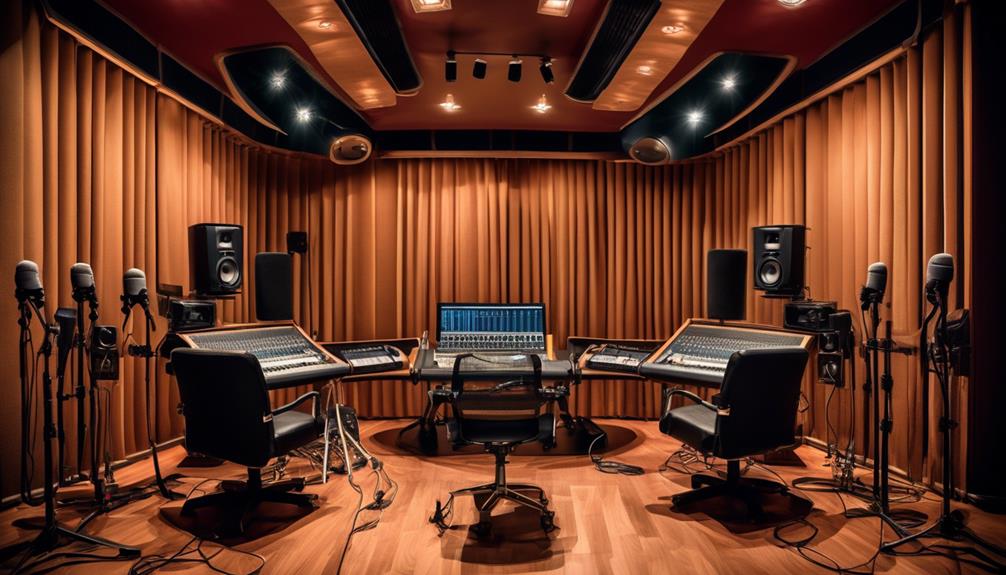
Transitioning from the discussion of natural and lifelike sound representation, the benefits of stereo recording extend to the reduction of phase interference between speakers. This reduction occurs due to the separation of sound sources across the stereo field, minimizing phase interference and enhancing the overall listening experience.
Here's a breakdown to illustrate how stereo recording reduces phase interference between speakers:
- Separate Speaker Placement: Stereo audio allows for panning instruments to separate speakers, preventing phase interference that may occur when the same sound originates from multiple locations. By placing different audio elements in the left and right channels, phase interference is minimized, resulting in a cleaner and more accurate sound reproduction.
- Greater Control Over Audio Elements: The use of stereo audio techniques offers greater control over the placement of audio elements, reducing phase interference between speakers and ensuring a more precise sound reproduction. This control helps to prevent phase cancellation and ensures that the stereo signal is accurately reproduced without the issues commonly associated with mono recordings.
Understanding these benefits is crucial for achieving optimal sound quality and reducing phase interference between speakers when mixing audio in stereo.
Versatility in Music Production
In music production, our ability to utilize stereo recording techniques provides a remarkable level of versatility. Stereo recording, as opposed to mono recording, captures the audio signal using two separate channels, allowing for a more immersive and dynamic sound. This versatility in capturing audio opens up a myriad of possibilities in music production. It enables us to create a sense of space and depth in the sound, making the listening experience more engaging for the audience.
One of the key benefits of stereo recording in music production is the ability to manipulate the placement of sound within the stereo field. This means that different elements of the music can be panned left or right, providing a more balanced and interesting mix. Additionally, stereo recording allows for the use of stereo effects such as reverb and delay, enhancing the overall sonic landscape of the music.
Furthermore, in stereo recording, each channel can be processed independently, offering greater control over the final sound. This level of versatility empowers music producers to craft a more intricate and compelling audio experience for the listeners.
Frequently Asked Questions
What Does Recording in Stereo Do?
Recording in stereo enhances our auditory experience by providing a wide spectrum of sound and spatial perception. It allows for realistic representation through stereo imaging and sound localization, adding depth perception.
This technique creates an immersive sound with balanced frequencies and dynamic range. By utilizing cues such as interaural level differences and interaural time differences, stereo recording brings a more engaging and dynamic sonic image, resulting in a cleaner and more coherent sound reproduction.
What Are the Advantages of Stereo Sound?
Recording in stereo offers significant benefits for sound quality, spatial imaging, and depth perception. It provides a more realistic and immersive listening experience, with enhanced dynamics and natural ambience.
Stereo sound allows for wide coverage and balanced mix, reducing phase interference and improving audio separation. Utilizing stereo techniques creates a sense of width and depth in the audio, enhancing the overall clarity and spatial placement of sound sources.
What Was the Major Advantage of Stereo Recordings?
Stereo recordings offer a major advantage in spatial separation, providing enhanced depth and an immersive experience. They deliver a realistic representation with clear imaging, balanced sound, and a wide spectrum.
Additionally, stereo recordings offer a dynamic range, capturing natural ambience and allowing for artistic freedom. These benefits result from the utilization of stereo audio cues and microphone techniques, creating a more compelling and true-to-life listening experience.
Is It Better to Record in Stereo?
Recording in stereo offers superior audio quality, enhanced spatial perception, and wider soundstage depth. It allows for natural ambiance and enhanced realism, with instrument separation and wide frequency range.
Stereo recording provides an immersive experience and creative flexibility, enhancing imaging. While mono has its merits, stereo recording elevates audio production, making it better for capturing the full breadth and depth of sound, and providing a more engaging listening experience.
Conclusion
In conclusion, recording in stereo offers a multitude of benefits for audio professionals and enthusiasts alike.
Did you know that over 90% of music producers and engineers prefer recording in stereo for its enhanced depth and spatial imaging?
This technique provides a more immersive sound experience, natural sound representation, and reduced phase interference between speakers, ultimately enhancing the overall quality of the recording.
Its versatility in music production makes it a valuable tool for creating captivating audio experiences.

